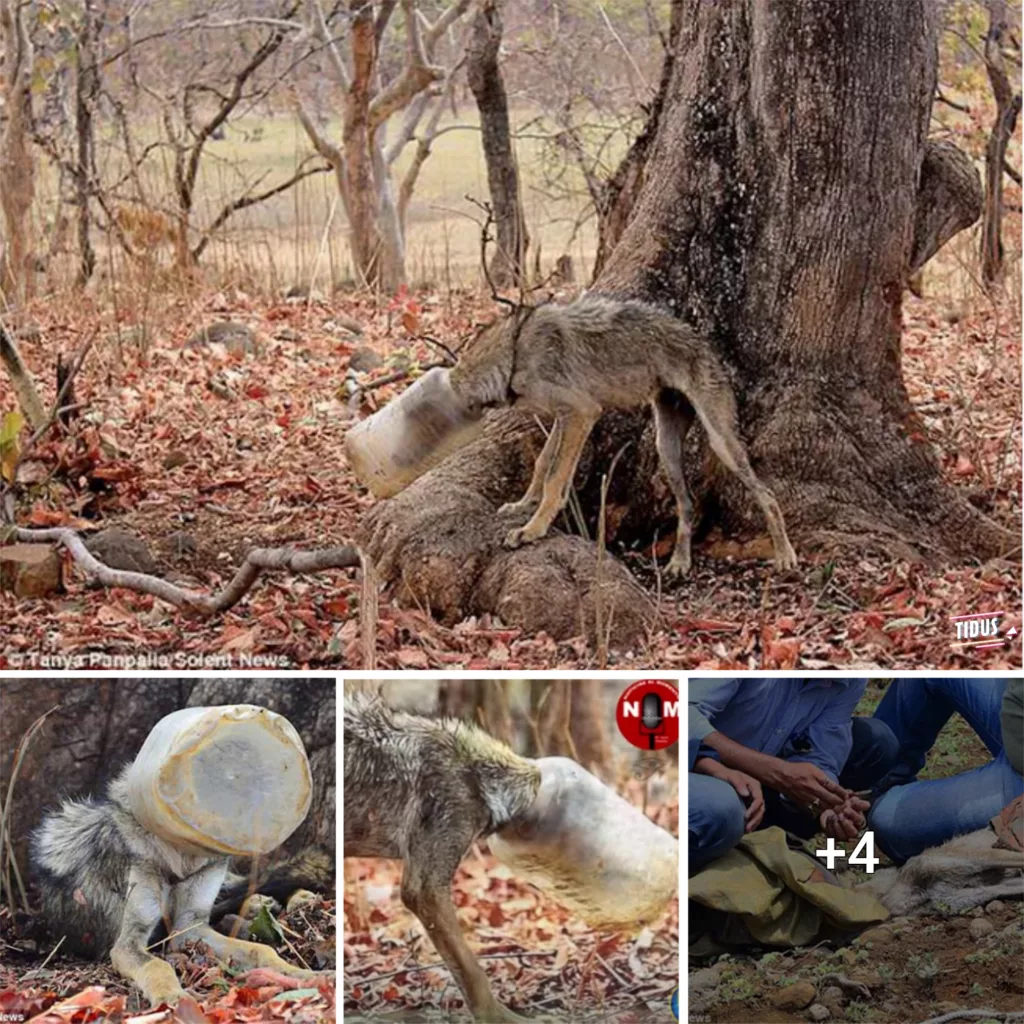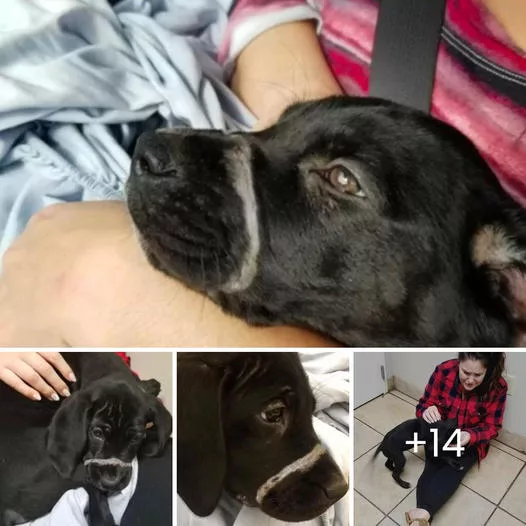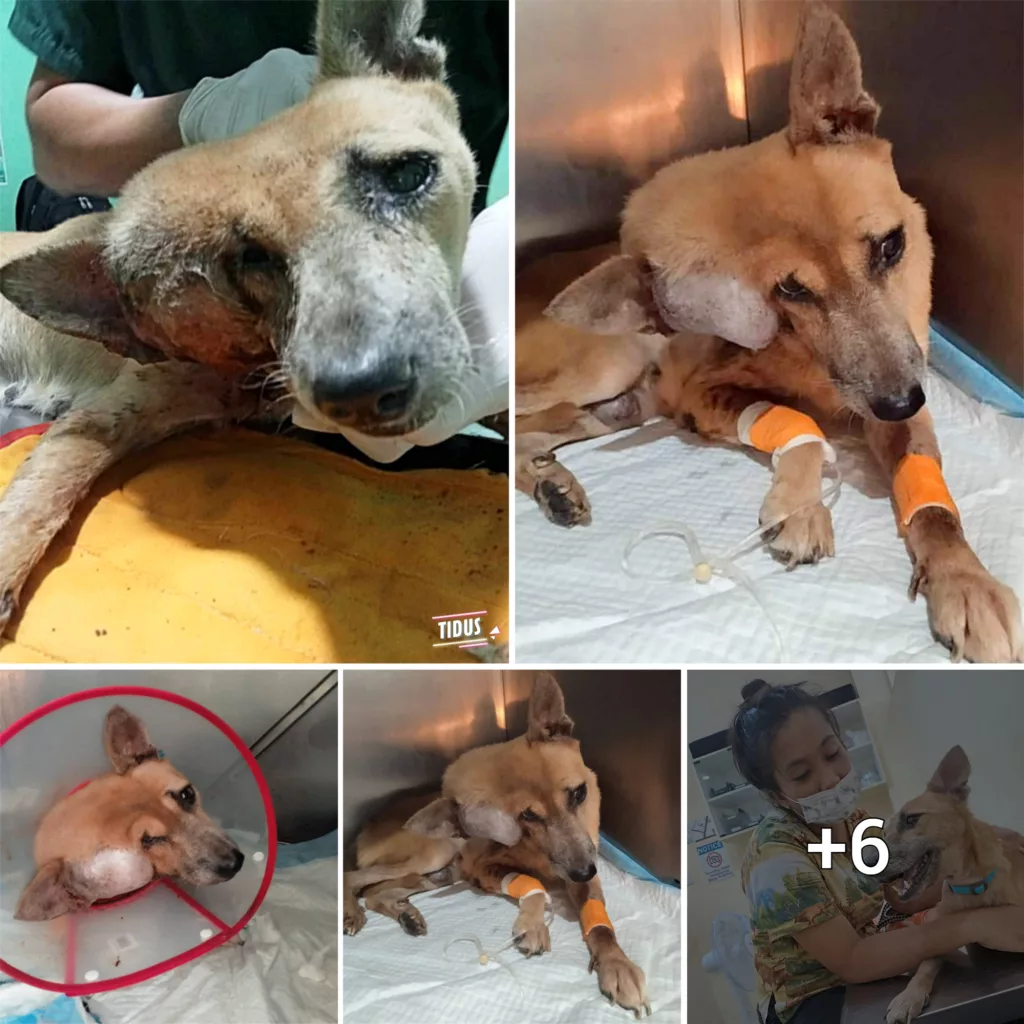In the vast expanse of the African wilderness, a distressing sight of a majestic elephant with a crimson trunk sends shockwaves through the hearts of observers. The wounded elephant, whom we’ll call Bella, is in dire need of urgent assistance. Understanding the significance of proper handling in such situations becomes paramount as the race against time to save Bella begins.

The crimson hue on Bella’s trunk is a glaring indicator of her ordeal, a telltale sign of injury that demands immediate attention. The source of the injury remains a mystery, and the conservationists and wildlife experts on the scene understand that prompt and careful handling is crucial to assess the severity of the wound and provide appropriate treatment.

Approaching a wounded elephant is a perilous endaor, as the gentle giants’ reactions to distress can be unpredictable. Bella, in her pain and fear, might interpret human presence as a threat, potentially putting her rescuers at risk. Therefore, the team must exercise extreme caution and rely on their expertise to approach her safely.

The conservationists understand that their actions need to be gentle and non-threatening. Their approach must be a delicate dance of empathy and respect for Bella’s vulnerability, ensuring that she feels secure and understood in this unsettling situation. With soothing voices and slow movements, they strive to build trust and convey their intentions to help.

Once the team is within a safe distance, they carefully observe Bella’s behavior and physical condition. The crimson hue on her trunk indicates possible blood loss, and the conservationists must act swiftly to assess the extent of the injury and determine the best course of action.
In situations like these, tranquilizing Bella might be the only option to administer proper medical attention. However, the conservationists are mindful of the potential risks associated with tranquilization, as it can affect an elephant’s breathing and overall well-being. They meticulously calculate the dosage and timing to minimize any adverse effects.
With expertise and precision, they administer the tranquilizer, and Bella gradually succumbs to the sedative’s effects. The team springs into action, providing medical care to stabilize her condition. The wounded trunk is treated with utmost care, and they clean the wound to prevent infection.
As Bella lies sedated, the conservationists are vigilant, ensuring her safety and closely monitoring her vital signs. The wait feels agonizing, but their determination and commitment never waver. Finally, Bella begins to awaken, her eyes slowly blinking open, revealing a sense of relief and gratitude towards her rescuers.
Over the following days, Bella’s recovery is a testament to the effectiveness of the team’s efforts. Her crimson trunk starts to heal, and the pain begins to subside. With each passing moment, she regains her strength, and her spirit appears to be rekindled.
Bella’s story serves as a poignant reminder of the vital role proper handling and expertise play in rescuing wildlife. The delicate balance of empathy and precision ensures the safety and well-being of the animals in distress. Bella’s crimson trunk, once a symbol of suffering, becomes a symbol of hope and resilience, showcasing the transformative impact of compassionate conservation efforts.
The conservationists’ dedication and ability to handle this delicate situation with the utmost care have not only saved Bella’s life but also reaffirmed the importance of human intervention when it comes to protecting and preserving wildlife. As the crimson hue on Bella’s trunk gradually fades, it leaves behind a profound lesson – that by understanding and acting responsibly, humanity can be a force for healing and safeguarding the magnificent creatures that share our planet.



